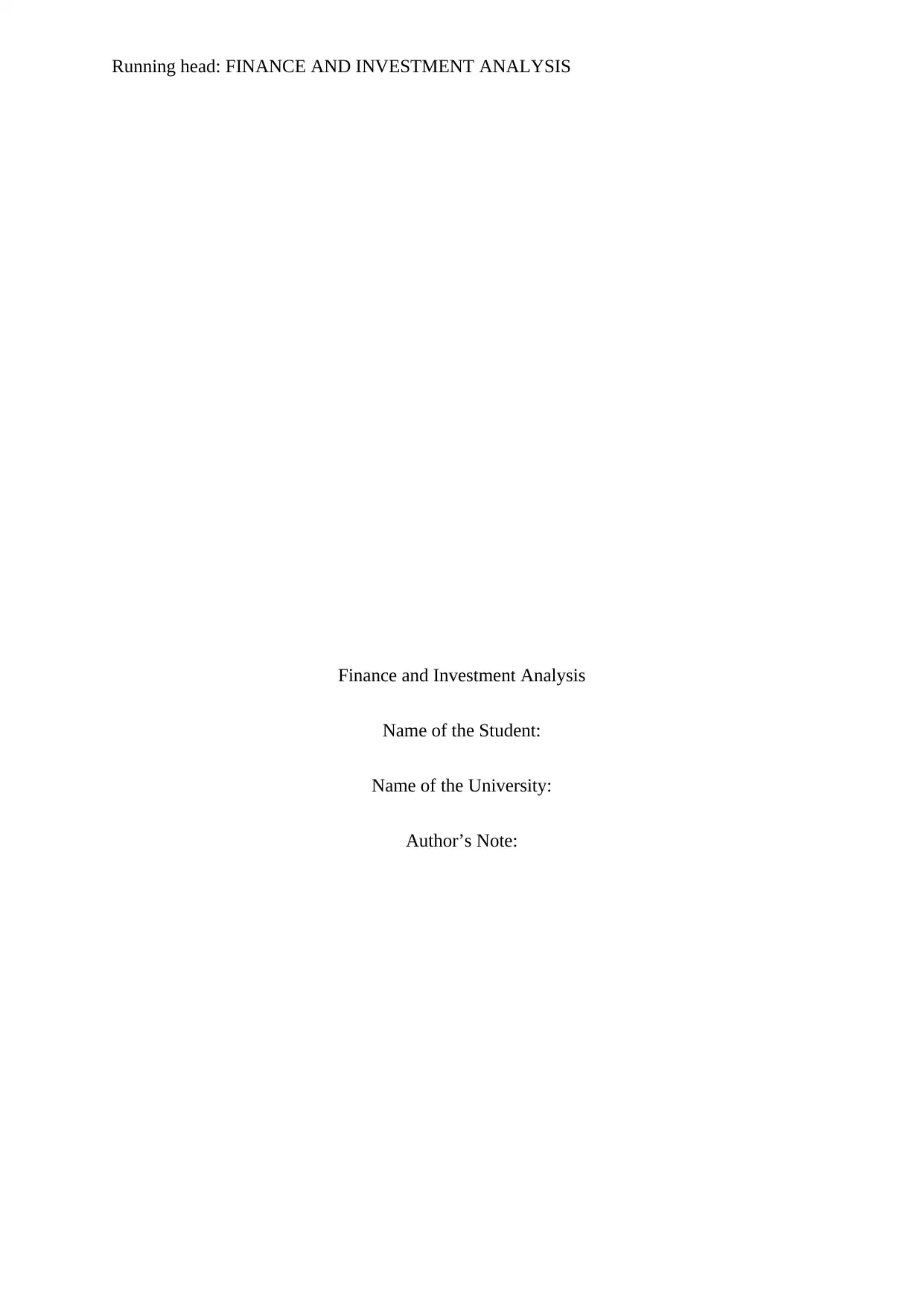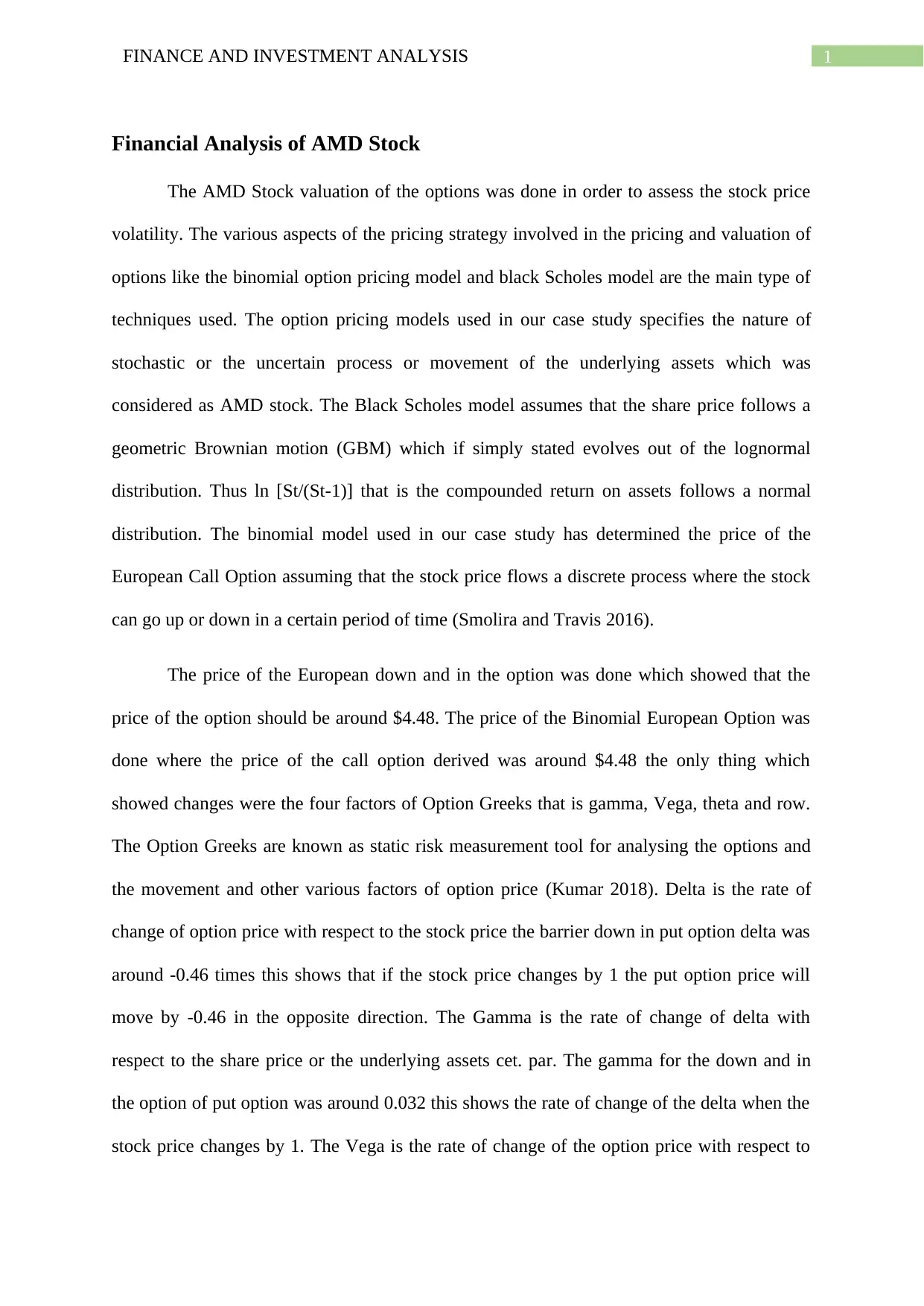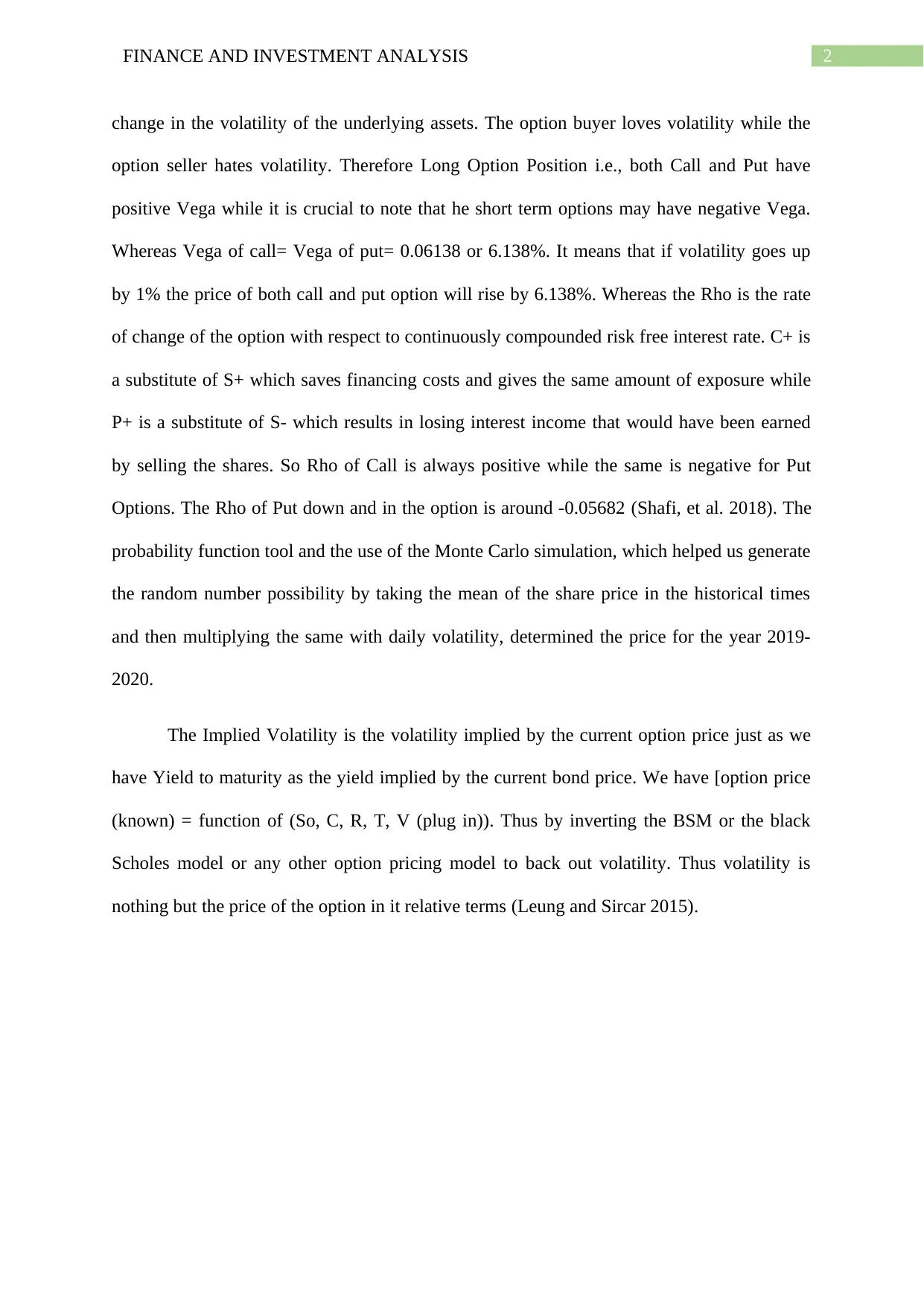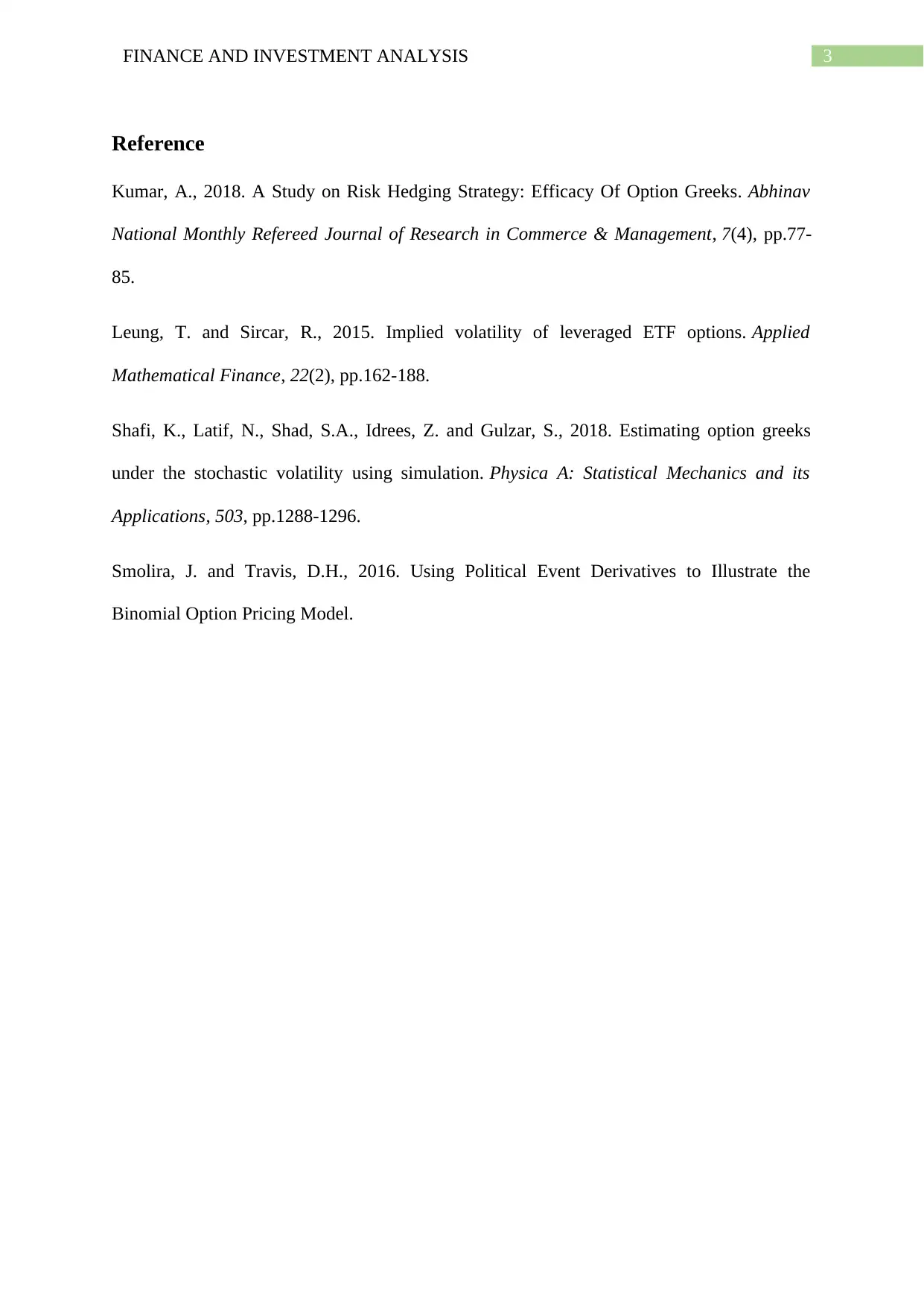University Finance Project: AMD Stock Analysis and Option Valuation
VerifiedAdded on 2023/06/03
|4
|905
|195
Project
AI Summary
This project focuses on the financial analysis of AMD stock, specifically evaluating a down-and-in option. The analysis employs the binomial option pricing model and the Black-Scholes model to assess stock price volatility. The project delves into option pricing strategies, including the use of Monte Carlo simulation and the calculation of implied volatility. The study also examines Option Greeks (delta, gamma, vega, and rho) to analyze the movement of option prices and their sensitivity to various factors. The findings show the price of the European down and in the option was done which showed that the price of the option should be around $4.48. The analysis also incorporates the probability function tool to determine the price for the year 2019-2020. This project offers a comprehensive understanding of option pricing and risk management within the context of AMD stock.
1 out of 4











![[object Object]](/_next/static/media/star-bottom.7253800d.svg)